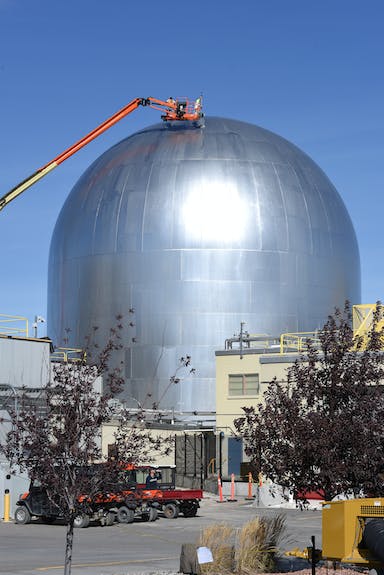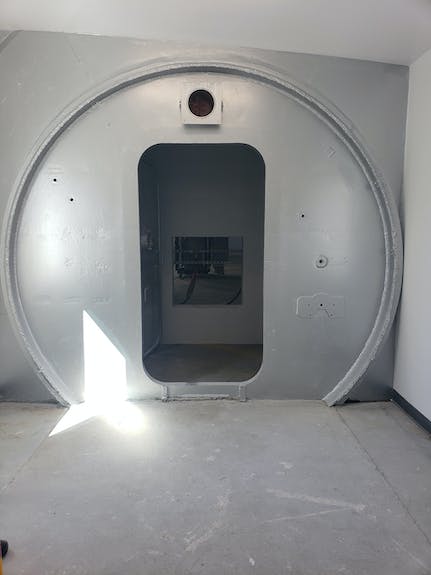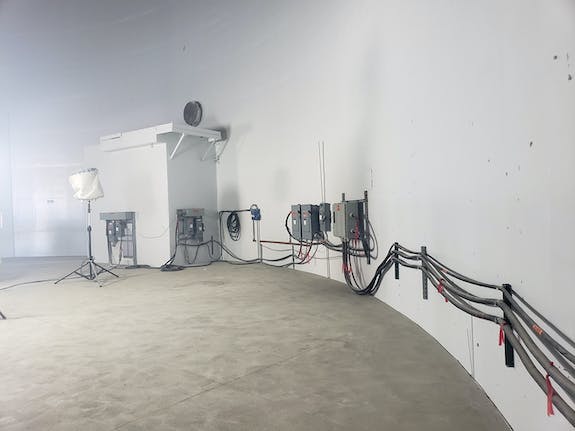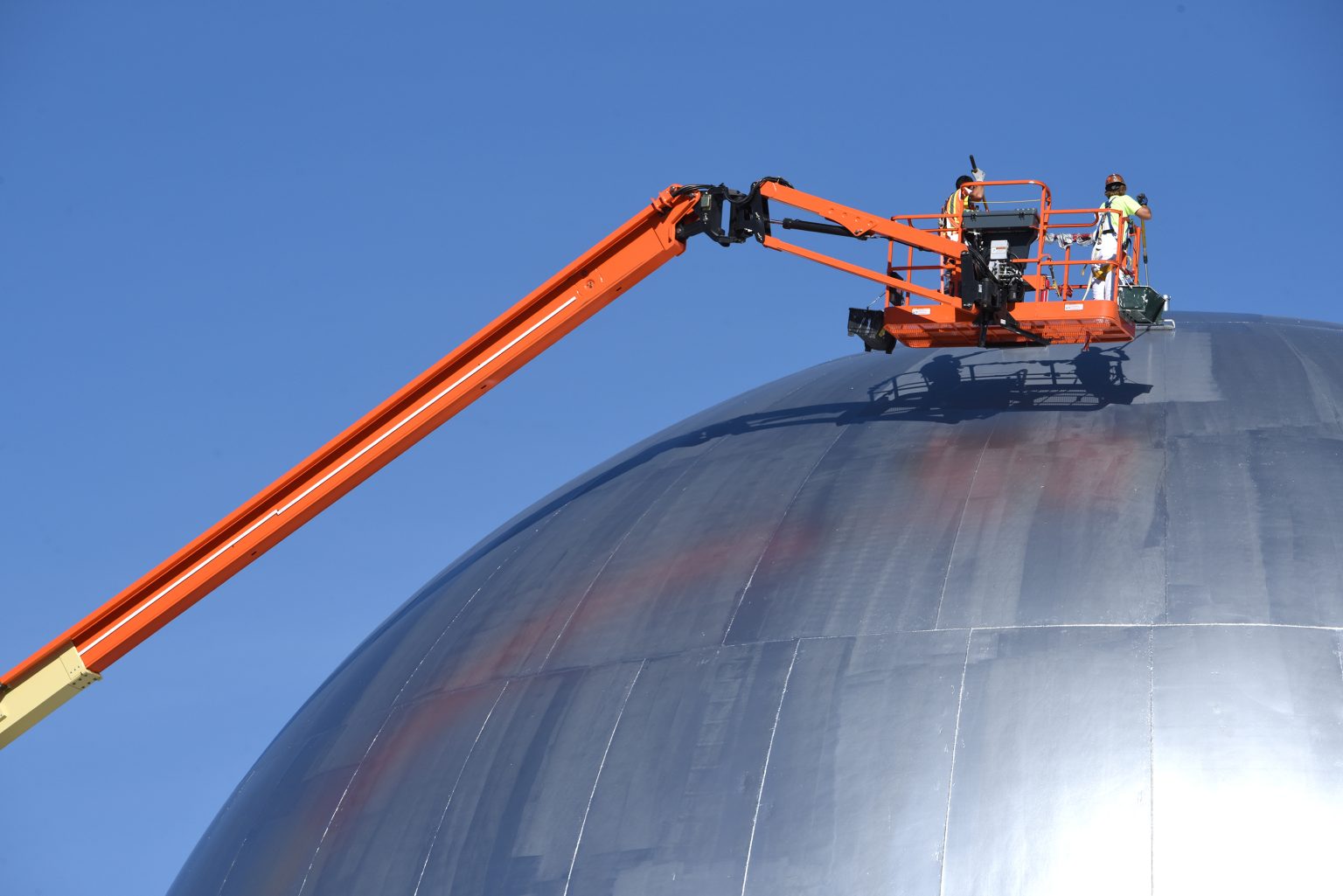The historic Experimental Breeder Reactor-II dome is getting a well-deserved face-lift, inside and out.

Crews recently painted the exterior and performed other work inside the distinctive structure, which still dominates the skyline at Idaho National Laboratory’s Materials and Fuels Complex. The EBR-II dome has been empty since the removal of hazardous materials and final entombment of the reactor tank and below-grade components was completed. By 2016 the building and dome structure were prepared for final demolition.
It was placed on the U.S. Department of Energy’s list for demolition starting in 2007 and was months away from demolition a few years ago. The old building was given new life when ownership of this asset was transferred from DOE’s Office of Environmental Management to DOE’s Office of Nuclear Energy (DOE-NE) in 2018.
“This facility offers approximately 4,800 square feet of internal floor space that is available to support new missions after it is returned to an operational status,” said Ron Crone, MFC associate laboratory director. “It serves as a great example of facility reuse with limited additional investment, shortening the time and reducing the cost it takes to complete an advanced nuclear project.”
The building’s structure has remained solid, but it needed a little sprucing up to make it more attractive for use in future research missions.
INL hired Industrial Construction of Idaho Falls to serve as general contractor and handle the bulk of the work, including sandblasting some of the more weathered spots and painting the dome’s exterior. Workers began in early August 2019 and in October applied the third and final coat of silver-brite aluminum paint.

“This is one interesting job,” Craig Whitaker of Industrial Construction said. “It’s a little different than the usual jobs we do.”
The shiny new paint job is the most obvious improvement, but crews have also poured a new floor and done other work inside the dome to make it more hospitable. Work still remains to repair the crane system and install utilities. Whitaker’s crews will also do work on the grounds outside the dome.
“If it had been torn down, we wouldn’t have been able to use that footprint (to build a new structure on),” said James Wojciechowski, MFC’s Utilities and Infrastructure manager.
Wojciechowski’s first job after leaving the Navy was as a reactor mechanic at EBR-II in 1990. He said he remembers some tough workdays while the reactor was being defueled, and said part of him wouldn’t have minded seeing the dome torn down. But he also knows what the EBR-II dome means to MFC and INL.
“There’s some nostalgia there,” Wojciechowski said. “It reminds people what happened here, and some of the history that was made here.”
What was EBR-II?
- 62.5 MWth, 20 MWe liquid-sodium cooled, fast breeder reactor
- Reached criticality in 1964 and ran for 30 years
- EBR-II had four major missions:
- Demonstration of closed fuel cycle (1964-1969)
- Steady state fuels and materials test reactor (1970 to 1978)
- Operational test reactor (1979 to 1986)
- Integral Fast Reactor demonstration (1982 to 1994)

TIMELINE
June 1958: The EBR-II project breaks ground.
May 1961: Construction is completed.
August 1964: EBR-II begins operation.
May 1965: EBR-II uses recycled uranium fuel – reprocessed on-site at the nearby Fuel Cycle Facility – for the first time.
September 1969: EBR-II output increases to the plant’s “design value” of 62.5 megawatts of heat and 20 megawatts of electrical power. The reactor would come to provide the rest of the Site with much of its heat and operating power.
April 1986: EBR-II demonstrates “inherent safety” with the Shutdown Heat Removal Test; following a temperature rise, EBR-II safely shuts itself down.
August 1994: Funding of the EBR-II project is terminated by Congress.
Sept. 27, 1994: The reactor runs for the last time.







